A strong and effective network infrastructure is crucial for any firm, whether small or large and has never faded in today’s world. An 8-Port Gigabit Ethernet Smart Managed Switch with 2 SFP Ports is a handy device that offers better data connectivity, facilitates efficiency in the ordinarily cumbersome task of network management, and enhances the overall interconnectedness of the user. This article aims to clarify the technical aspects of the construction, function, benefits, and actual utilization of this particular type of network switch, including some attention to the practical aspects of its use over the tension. Suppose you want to maximize the configuration of existing networks as an IT professional or replace the former business network with more efficient and modern network solutions. In that case, this article will allow the acquisition of the basic knowledge necessary for making the correct decision.
What is an 8-Port Gigabit Ethernet Switch, and What Primary Function Does It Perform
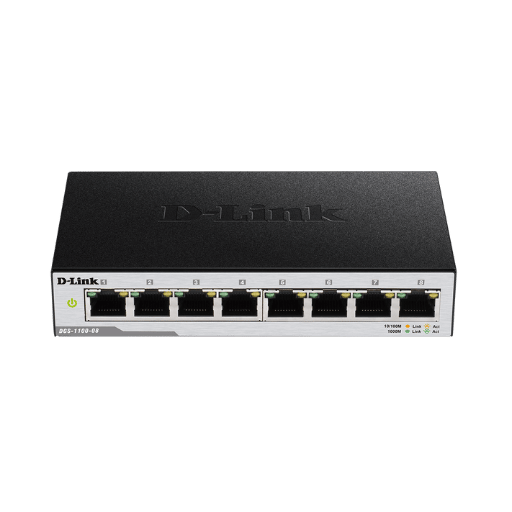
An 8-port Gigabit Ethernet Switch is a networking component that helps directly connect a number of networkable devices on a Local Area Network (LAN) subnet. The switch contains eight ports of the Gigabit Ethernet standard, hence supporting 1000 Mb data transfer rates for each port to enhance connectivity. Such a switch improves and maintains the data flow among devices, thus increasing communication efficiency over the network. It is very important in places where a dependable and bandwidth-substantiated network is needed, such as offices, data storage regions, and modern home networks.
What are the advantages of using a gigabit Ethernet switch?
- High-Speed Connectivity: Every port supports data transfer of up to 1,000 Mbps, thus enhancing speedy communication among devices.
- Improved Network Performance: Advanced technology assists in routing data, thus reducing congestion and improving the network’s functionality.
- Scalability: Makes street and easy network add-on due to diverse devices deployed in the environment.
- Enhanced Data Management: Features permitting intelligent management that will be helpful to network administration actively.
- Reliability: Sufficient network connections for business purposes using the gigabit ethernet switch.
- Security Features: Special preparation permits the masking of highly confidential information, thus preventing any access to it.
What is the difference between a managed switch and an unmanaged switch?
The managed switch has precise and total control of the network, so the network managers can alter and configure each port, manage traffic, and deploy security features. This includes enabling features such as VLANs, QoS, and SNMP for network maintenance and troubleshooting. On the other hand, An unmanaged switch is plug-and-play. That means, in a general definition, there are no ports or settings to be set. It simply connects devices and enables them to talk, but that’s where the buck stops – there is barely enough enterprise configurability and management. Managed switches support advanced features and functionalities in complex and large-scale networking applications, while unmanaged switches are best for basic small networks that require quick configurations and less management.
What are the advantages of an 8-Port Gigabit Smart Managed Switch?
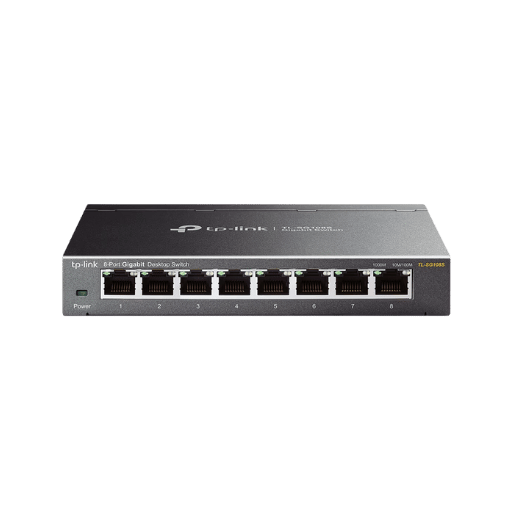
Why use an intelligent managed switch?
- Efficiency: Allows proper data management over the network, decreasing congestion and delays.
- Customization: Possesses the context in which the demand of the network can set controls.
- Monitoring: This supplies the means for real-time traffic analysis and diagnosis.
- Security: Outlines several primary ways through which safety on the network is maintained.
- Cost Sophistication: Lowers maintenance and operational costs by optimizing resources and minimizing outages.
Why a single eight-port gigabit switch?
- High-speed Connectivity protects data transfer and facilitates gigabit Ethernet connectivity.
- PoE: Power over Ethernet (PoE) is an optional feature that allows devices such as an IP camera or VoIP phone to receive power through the Ethernet cable.
- VLAN Support: Segments the network geographically over several different VLANs, thus improving network performance and security.
- QoS: Availability of features that help manage traffic on the network so that important applications are not adversely affected by other applications running on the same network.
- Energy Efficiency: Devices incorporate Power-saving features such as Energy Efficient Ethernet (EEE), which minimizes power consumption when there are no or low data activities.
- Port Mirroring: Auxiliary interface mostly used during network monitoring allows network traffic to be visible for observation.
- User Interface: Includes a web-based management feature that is very convenient for configuring or monitoring.
- Network Protection: Network security measures carried out include the use of access control lists (ACLs), port security, and 802.1X network access control.
A side-by-side comparison of managed and unmanaged switches
- Managed Options:– It allows the supervision of the equipment, management of traffic, setting and configuring VLANs, and ensuring network security, amongst other features. These are preferred in an environment where network management and optimization are necessary.
- Unmanaged Options: These are characteristically and structurally plug-and-play, with no configuration options available. They simply work and interconnect in a basic way—hence, suitable for non-complex basic networks.
What are SFP Ports and How Do They Enhance Your Network?
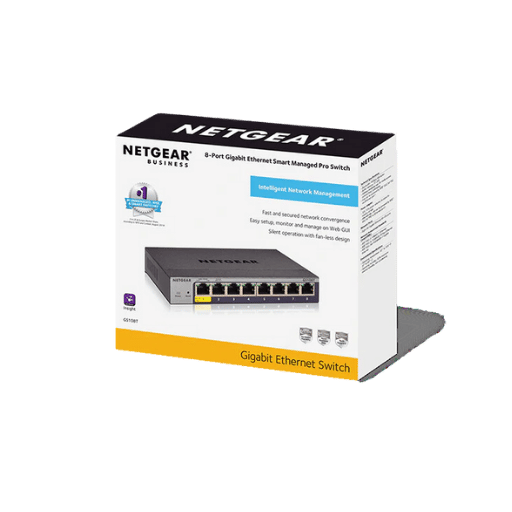
Identifying the reason for the existence of an SFP slot
SFP (small form-factor pluggable) slots are created to install SFP transceivers, which facilitate the modular distributive usage of fiber optic wire or a copper cable in a network switch. These slots support the enlargement of the network capacity by supporting simple upgrades and reconfiguration of the network connections, bypassing the whole switch. Moreover, SFP ports provide high data rates along long distances; hence, they are suitable in environments with long-distance or high bandwidth networking needs.
How to utilize SFP ports on an 8-port switch?
To make the most of the SFP ports on an 8-port switch hardware, the following steps are followed:
- Insert the SFP Module: Insert the SFP transceiver module that is compatible with the SFP slot on the switch to the SFP slot on the switch and push it until a click sound confirms the secure fastening of the module.
- Connect the Cable: Connect a suitable fiber optic or copper cable to the SFP module for a gigabit SFP connection. Verify that the connection is tight.
- Configure the Port: Enter the switch configuration menu to adjust the settings for the SFP port to meet your network’s specific requirements. Such requirements include setting the port speed, specifying ‘full duplex’ or ‘half-duplex,’ or other specifications.
- Verification Of Connections: Verify with the SFP port status indicators on network diagnostic tools or on the switch page whether the SFP port is active and is sending information.
In this way, the SFP ports of an 8-port switch can be most efficiently used to enhance the network’s performance and flexibility.
How to Install and Configure an 8-Port Gigabit Switch?
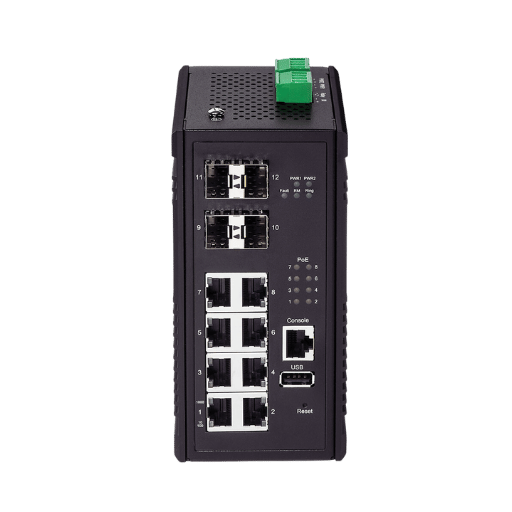
Equally simple procedures on how to install an ethernet switch
- Bring out the Switch: Take the switch out of its packing materials and check the item to ensure there are no faulty parts.
- Select the Appropriate Site: Station the switch on a firm surface in a cool area with power points and the devices to be linked to it within reach.
- Power the Switch: Plug the switch into the electrical outlet using the power source that comes with it. If the device has a power switch, turn it on.
- Connect to a Router or Modem: On the other side of the Ethernet cable, plug it into one of the switch’s available ports. This will allow the switch to share the broadband connection.
- Connect Devices: Use the remaining Ethernet ports on the switch to connect various devices, such as computers, printers, and access points, to the network using Ethernet cables.
- Check Connectivity: Go to the LED lights installed on the device to check that all devices that have been plugged in are connected to the network.
- Optional Configuration: To change the additional settings, log into the web management page of your Hue gigabit-managed switch. There, you can assign the IP address, VLAN, Quality of Service, etc.
Practical steps are involved in configuring Ethernet switches further, which will help establish a connection for the devices connected to the network.
Guidelines, tips, and ways on how to configure managed switches
- Use of VLANs: Enhance network traffic security and performance by creating Virtual Local Area Networks.
- Enable QoS: Allocate bandwidth appropriately among traffic flows to optimize network resources.
- Update Firmware Regularly: Ensure that the switch operates under the most current firmware to capitalize on security improvements.
- Configure Spanning Tree Protocol (STP): Manage traffic loops for the advantage of working within a fully fault-tolerant network structure.
- Implement Port Security: To avoid unauthorized devices’ usage, ensure the number of MAC addresses that can be registered on each port of your smart switch is minimal.
- Monitor Network Traffic: Effectively monitor the network so that unusual traffic and performance issues can be easily and regularly diagnosed using SNMP.
- Backup Configuration: The switch’s configuration should be backed up regularly to ease any configuring tasks that may be performed after the switch fails.
How to Fix Gigabit Switch Problems
- Check if the Switch Power Supply is working properly. The switch should be properly powered.
- Check Connections. The correct type of cables that are not damaged should be used, and all cables must be connected properly.
- Check the status of each port on the report, such as if the port has activity, power, or any other function.
- Run a Speed Test on the Network: Check that the devices & cables are operating at or above gigabit network speeds.
- Update Switch Operating System: Upgrade the firmware to the most current version if it is outdated.
- Turn off and turn on the Switch: Instead of resetting the device, switch it off/on or turn on the power and then switch it off as necessary.
- Look into System Logs: Check system logs for error codes and other diagnostic reports.
Grasping the Concept of Power over Ethernet Technique in 8-Port Switches
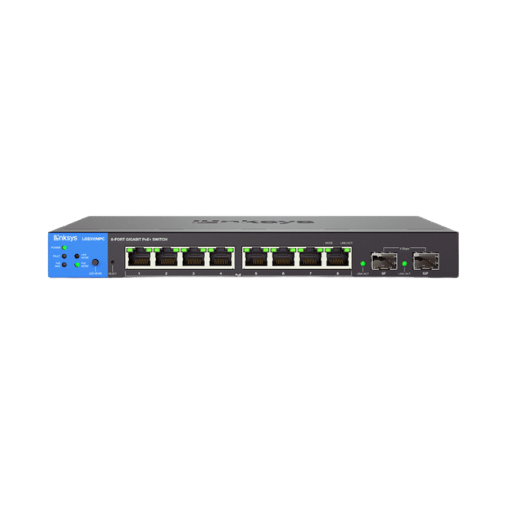
What is PoE, and what is its working principle?
Power over Ethernet provisions or PoE can also be defined as a technology where the Ethernet cables not only carry data but power to apparatuses that may be quite a distance. Power over Ethernet technology has provided the construction of a cable-assisted system working well with a managed PoE switch. Thus, a VoIP phone, a wireless access point, or an IP camera receives power through its cable without needing an external AC source adapter. PoE also helps ease the installation and overhead by using a single cable to transmit power and data.
Importance of having an 8-port gigabit PoE switch
- Effective use of cables: This minimizes the number of data and power cords linked to make the exercise more efficient.
- Reduced charges: This expense makes the existing Ethernet layout easier to use, lowering the installation and maintenance expenses.
- Ease of Installation: This makes installation non-restrained, as devices can be placed where they function best without considering power socket locations.
- Expansion allows the number of devices in the system to be increased with little or no alteration in the structure of the device networks.
- Dependability: A simple, reliable connection provides power to devices classified as Critical indefinitely.
- Enhanced network performance: This allows gigabit speeds to support bandwidth-demanding applications and devices.
Budgeting and Power Distribution Control
- Calculating Power Requirements: Identify the number of units and the total power used by all PoE equipment connected to the network.
- Check Switch Capability: Check whether a PoE switch can power on more devices than the allocated power.
- Prioritization: Define power priority settings where critical power devices are powered on first, followed by the less critical ones.
- Monitoring Power Consumption: Use the switch’s management interface to check any abnormal activities concerning consumption patterns as often as necessary.
- Power Distribution: Implement dynamic distribution of power based on demand.
Popular Models and Brands of 8-Port Gigabit Ethernet Switches
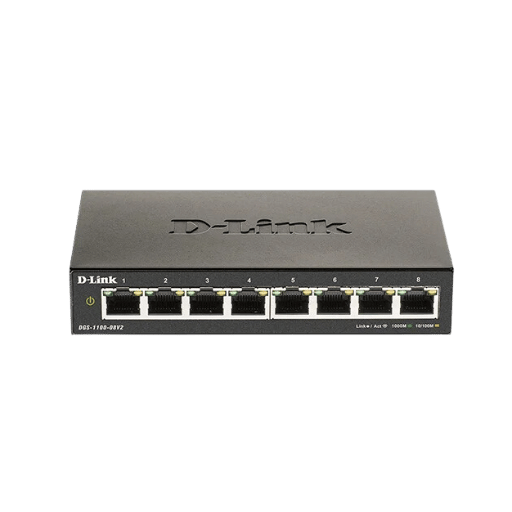
8 Port Managed Switch Review
Netgear ProSafe GS108Ev3
- If you are looking for the best eight-port gigabit switch in the market, I would recommend the Netgear ProSafe GS108Ev3, as it provides better management options and usability. The switch has advanced features such as VLAN and QoS traffic management facilities and IGMP snooping that help enhance the network’s efficiency for SMEs. Also, the ease of configuration and control of the interface through the internet has been found attractive, making it cheaper for both companies and home users.
TP-Link TL-SG108PE
- Connecting the IP surveillance cameras using a power-over-ethernet switch, such as the TP-Link TL-SG108PE, is another product that belongs to the league of top sellers in the 8-port managed switch category. This switch provides both gigabit speeds and PoE capabilities, supporting up to 55W power budget across its ports. It also implements all features concerning traffic management, such as port-based QoS, rate limits, and traffic policing. It is built of metal, and being affordable is good for small offices looking to enhance their overall network systems.
Cisco SG250-08-K9-NA
- The remarkable qualities of Cisco SG250-08-K9-NA include dependability and comprehensive management features. An 8-port gigabit switch is included in the small business selection of Cisco products and comes with enhanced security options, multiple VLAN configurations, and great QoS support. It presents easy to use web management and an advanced configuration set that is ideally suitable for IT Professionals. Its efficient working and strong brand image has made it popular among those businesses that seek a reliable, managed switch with gigabit ports.
How the Netgear switches differ from other brands and the functionality of the Netgear 8-port gigabit switch
Combining simplicity in management and advanced performance, the Netgear 8-port gigabit switch also comes with the full support of VLAN, QoS traffic management, and IGMP snooping. Its basic web management seems to be rather easy than that of the TP-Link TL-SG108PE, which has PoE and traffic management support with a power budget of up to 55W but is not a favorite of some advanced settings. For users that want more integrated functionality, the Cisco SG250-08-K9-NA gets the highest outlook where security, multiple VLAN, and QoS capabilities are provided, but these features are mostly tagged to heavy IT users inclined with the IT infrastructure who are brand-oriented. To sum up, the Netgear model is the most successful and sensible solution for users who value comfort and minimal management efforts for an adequate cost.
Aspects to be considered when purchasing industrial gigabit switch
When purchasing an industrial gigabit switch, the following should be given priority: the number of gigabit ports available if it is PoE and managed.
- Reliability: Make sure that the switch has been constructed to cope up with unfavorable environmental factors like very high and low temperature, vibration, and moisture.
- Backup capability: Assess its backup capability – its standard specification should have redundant power input and failover mechanisms.
- Network Access Control: Standard protocols need to be enforced, such as 802.1X authentication, DHCP snooping, and IP source guard.
- Expansion Capability: Supporting new growth through modular structures and increasing capacity for network expansion.
- Performance: High throughput and minimum latency have been achieved for high-end industrial applications.
- Management: There are several settings for network configuration and management, including SNMP, CLI, and web interfaces.
- PoE Support: If necessary, provide powering over ethernet capabilities for equipment such as IP monitors and other appropriate devices.
- Certifications: Products fully comply with particular industrial requirements, including those of IEC 61850, IEEE 1613, or EN 50155.
Reference Sources
VLAN
Network switch
Link aggregation
Frequently Asked Questions (FAQs)
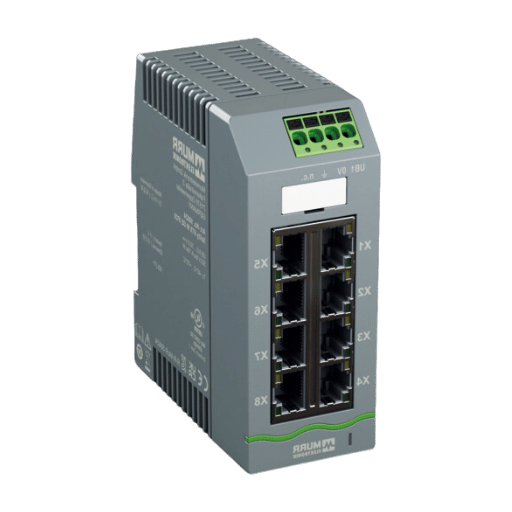
Q: What is a Smart Managed Switch 8 port Gigabit Ethernet with 2 SFP ports used for?
A: A Smart Managed Switch 8 port Gigabit Ethernet with 2 SFP ports is a network appliance consisting of 8 gigabit Ethernet ports and 2 small form-factor pluggable ports. It is beneficial as it has management functionality, high performance, and an additional option to broaden the scope of the network via fibers.
Q: Why is incorporating a managed Ethernet switch into the network useful?
A: Managed Ethernet switches provide some advantages, such as controlling and utilizing more network management features, security, VLAN management, QoS configuration, and network activity tracking. One advantage is that improved features translate to better network performance than unmanaged switches.
Q: What features distinguish an eight-process Gigabit switch from other types available in the market?
A: An 8-port gigabit switch runs with various high prospects. It has 8 Ethernet ports and a speed of operation of 1000Mbps, transmitting data at 1 Gbps. This is important in growing recognition or growing effectiveness in networks designed to be smaller in size and lawyer. As against the 10/100 Mbps switches, gigabit switches operate at a considerably higher available bandwidth and with better performance.
Q: Explain what SFP ports are and how they are present in this switch.
A: SFP( Small Form-factor Pluggable) ports are interfaces that enable any of several types of network modules, such as fiber optic or copper modules. Two SFP ports in this switch enable one to extend and connect the network using fiber optic cables. Fiber, instead of copper Ethernet cables, can transmit network data over longer distances at higher speeds.
Q: Is this type of switch meant particularly for a desktop switch?
A: Yes, this 8DL1554 multi-port gigabit smart managed switch is a desktop switch. It is compact and, therefore, can comfortably sit on a desk or in a small office space. Nonetheless, it is more advanced than most unreachable desktop switches in that it is a standard managed desktop 8-port gigabit switch that maximizes network efficiency.
Q: Is link aggregation supported on this switch?
A: Yes, this 8-port gigabit ethernet switch is one of many smart-managed switches, and link aggregation can be supported. Link aggregation in smart switches allows you to group several physical ports and treat them as a single logical port, which improves the available bandwidth and offers a high tolerance for network failures.
Q: Is it possible to connect a PoE device here? Are PoE ports available on this switch?
A: The particular switch in question does not have PoE capability, which is the most important feature of the managed PoE switch. However, 8-port gigabit PoE switches can power devices through network cables like coax cable. If you need such functionality, find a switch that clearly states ‘PoE’ and check whether the PoE power supplied to the switch can sufficiently power all intended devices.
Q: Can I expect any management features from this smart managed switch?
A: Smart switches typically have remote monitoring capabilities and can be configured with management features such as VLANs, QoS, port mirroring, IGMP snooping, and a basic level of security. Though they do not offer all functions as the fully managed switches do, they offer more than the unmanaged ones and thus aid the configuration and repair of the networks.
Q: How does this switch compare to a 24-port switch about its ports?
A: 2 SFP ports, an eight-port Gigabit switch designed to work as a router over a network or segment, and a 24-port switch appropriate for larger networks. The 8-port switch has the same features and performance on each active port as the additional ones, but fewer interfaces are provided. Evaluate the size of the switch you currently require and whether additional capacity may be needed.
Q: Is this switch suitable for industrial use?
A: This particular switch is not sold as an industrial switch, but there are eight port-managed industrial gigabit Ethernet switches. Industrial switches are manufactured to be used under very harsh conditions, temperature extremes, and exposure to electromechanical interference. If you want a switch to use in an industrial environment, ensure it is properly marketed as an industrial switch with the requisite ruggedness and certifications.






